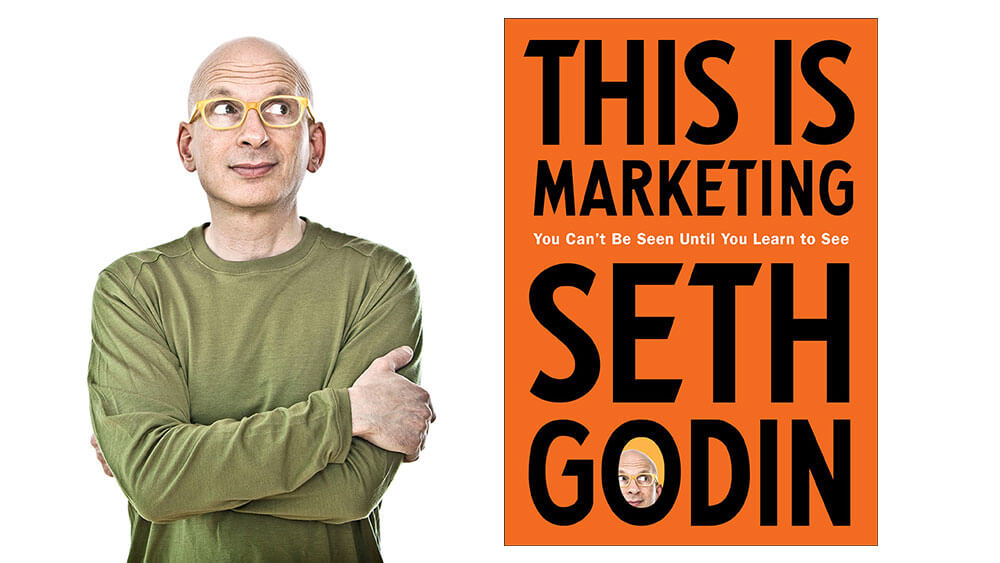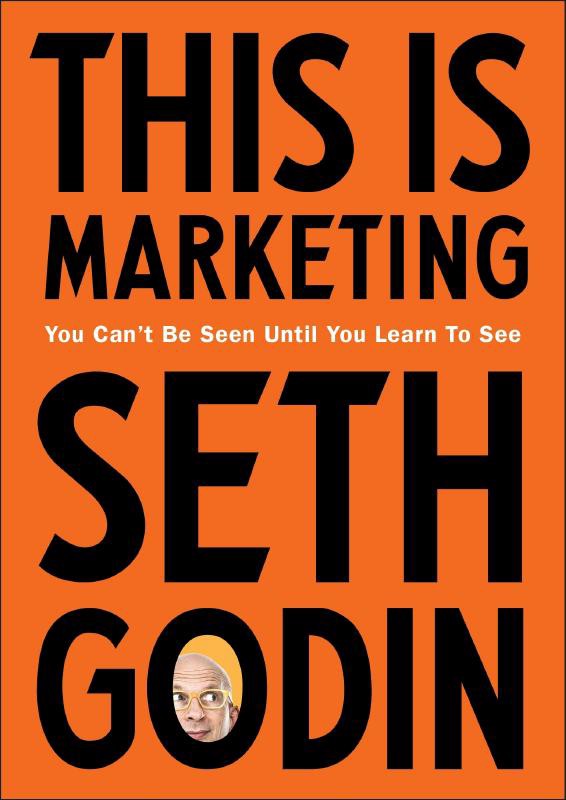
Seth Godin is a marketing philosopher and thinker.
He doesn’t provide a step-by-step guide or a detailed road map for action in any of his books. Still they sell like hot cakes (like this, this, and this).
His latest book This Is Marketing, Godin poo-poos practices used by “growth-hacking” marketers, and eschews the world’s fascination with marketing technology (or martech).
Focusing on empathy as the heart of marketing—”People like us doing things like this.”—his central premise is that marketing needs to “change people through stories, connections and experience.”
While This Is Marketing isn’t exactly as earth-shattering as some of his earlier works like Permission Marketing or Purple Cow, it does provide a couple of useful insights for marketers like us.
Find the Smallest Viable Market—And Change Them
“You’re not a cigar-smoking fat cat…. So why are you acting like one?”—Seth Godin
Marketing isn’t about hustling, interrupting, spamming and “making average stuff for average people while hoping you can charge more than a commodity price.”
Instead, it is about finding a smallest and most specific viable market, and changing people through…
- Stories: True stories that resonate and hold up over time.
- Connections: Helping people to be part of something bigger than themselves.
- Experiences: Offer experiences with intent, so that these actions help to build their story and their connections.
Use this three-sentence marketing promise from Seth:
- My product is for people who believe ____________.
- I will focus on people who want ______________.
- I promise that engaging with what I make will make you get _______________.
Position Yourself through Your Customer’s Story
The best way to win fans and customers is to dive deep into their psyche.
You need to understand that “better” is not up to you—it’s up to them. Be curious about what others need, want and desire, and have the humility to seek them out.
When you position yourself, consider the variable that matters to your customers. Use storytelling techniques to connect yourself to your customers. Tap into their dreams and desires.
In reaching the right audiences, the “us” matters—the more specific, the tighter the “us,” the better.
A Tale of Roots and Shoots
In short, at least according to Seth, your work is like a tree.
The roots of your work live in the soil of the dreams and desires of those you seek to serve.
If your work is merely a commodity, your roots won’t run very deep. Even if your tree grows, it won’t grow very tall or be important, useful or dominant.
If your work becomes a beacon for your community, you should seek to reach the early adopters (aka neophiliacs). They will engage with your tree, climb it, use it for shade, and eventually eat its fruits.
And they will attract the others.
If you planned well, your tree will grow taller as it is unblocked by other trees. As it grows, it will attract other people, while using its height to block out the futile efforts of other, similar trees.
How to Build Trust (and Tension) to Trigger Action
A pattern match is a comfortable state of affairs. You use that to match your brand to the story which your customers tell each other.
A pattern interrupt requires a jolt. It creates tension. It isn’t that comfortable—it demands of others to change their behaviours.
However, breaking the status quo is the only way to grow. Courageous marketers know that.
And they do that by changing the culture through status.
Change Their Status through Affiliation (not Dominance)
Status is our position in a hierarchy, and helps to protect us. It gives us leverage to make things happen. It creates a narrative that changes our perceived options, alters our choices, and undermines (or supports) our future.
To effect change, you need to…
- Consider the people you seek to serve
- Think about their external status (how they’re seen by their chosen community)
- Think about their internal status (how they see themselves)
- Work through how they maintain or seek to change that status. Do they belittle others? Seek approval? Help in selfless ways? Drive themselves to achieve more?
- Use that narrative to bring change to their world
In thinking about this, you need to build affiliation for your prospect through the process of community building. Help him to find like-minded others aligned to his worldview—who is standing beside him, rather than above or below him.
Send the Right Signals, and Enrol the Right People (ie Neophiliacs)
Marketing Semiotics is the discipline of sending the right signals and symbols to those you care about. Be mindful of how you do so.
Not everyone sees symbols the same way. Rather than hope to communicate all things to all men, focus your energies on the vital few that matter.
These would be the early adopters (aka neophiliacs) that could act as your brand herald. They are those that live on the edges. Those who are your superusers or sneezers.
Be a teacher. Enrol them as your users.
And if you’re tapping on search engines to be findable, build a brand that people will seek out—not just a generic solution provider targeting generic keywords.
How Price, Permission and Purple Cows Work
In Seth’s book, price is story. Price is also a signal. Or, to put it bluntly…
“Low price is the last refuge of a marketer who has run out of generous ideas.”—Seth Godin
Free ideas, however, can possibly spread. Hence, the idea is to pair up free ideas with expensive expression of those ideas that are worth paying for.
What about permission?
Well, permission marketing is about earning respect and enrollment. You do it by telling your story. Day by day. Drip by drip.
Don’t just talk at them; communicate the information that they want.
And you should also seek to create a remarkable product or service worth talking about. What Seth calls a Purple Cow.
Design your product for evangelism, rather than bribe or cajole your users to spread the word.
Leading a Tribe through Storytelling
To organise and lead a tribe, you need to invest in them, gain empathy for them, understand their narrative, and serve them again.
One way of doing so is to use a 3-step narrative by Marshall Ganz:
- STORY OF SELF: Your own narrative. Explain why you are just like your tribe. Develop empathy.
- STORY OF US: Describe why you’re similar to your prospects. Why are we alike? Why should we care?
- STORY OF NOW: The pivot where you enlist your tribe in your story. A.k.a. your Call To Action (CTA).
The key thing here is to identify your shared interests, shared goals and shared language. This will be how you can strike rapport with members of a tribe.
“They’re lonely and disconnected, they fear being unseen, and you, as the agent of change, can make connection happen.”—Seth Godin
Conclusion
Like many of Seth’s other books, This is Marketing—You Can’t be Seen Until You Learn to See, is pretty heavy in rhetorical flourish.
You do need to spend some time thinking and pondering about what Seth is trying to convey.
Towards the end, you’re led to the most important person that you need to market to—yourself.
Let me end with these lines from the book:
“It is the marketing we do for ourselves, to ourselves, by ourselves, the story we tell ourselves, that can change everything. It’s what’s going to enable you to create value, to be missed if you were gone.”
PS – you can download a free chapter here! Go check it out, and if you like it, please buy the book!


One Comment